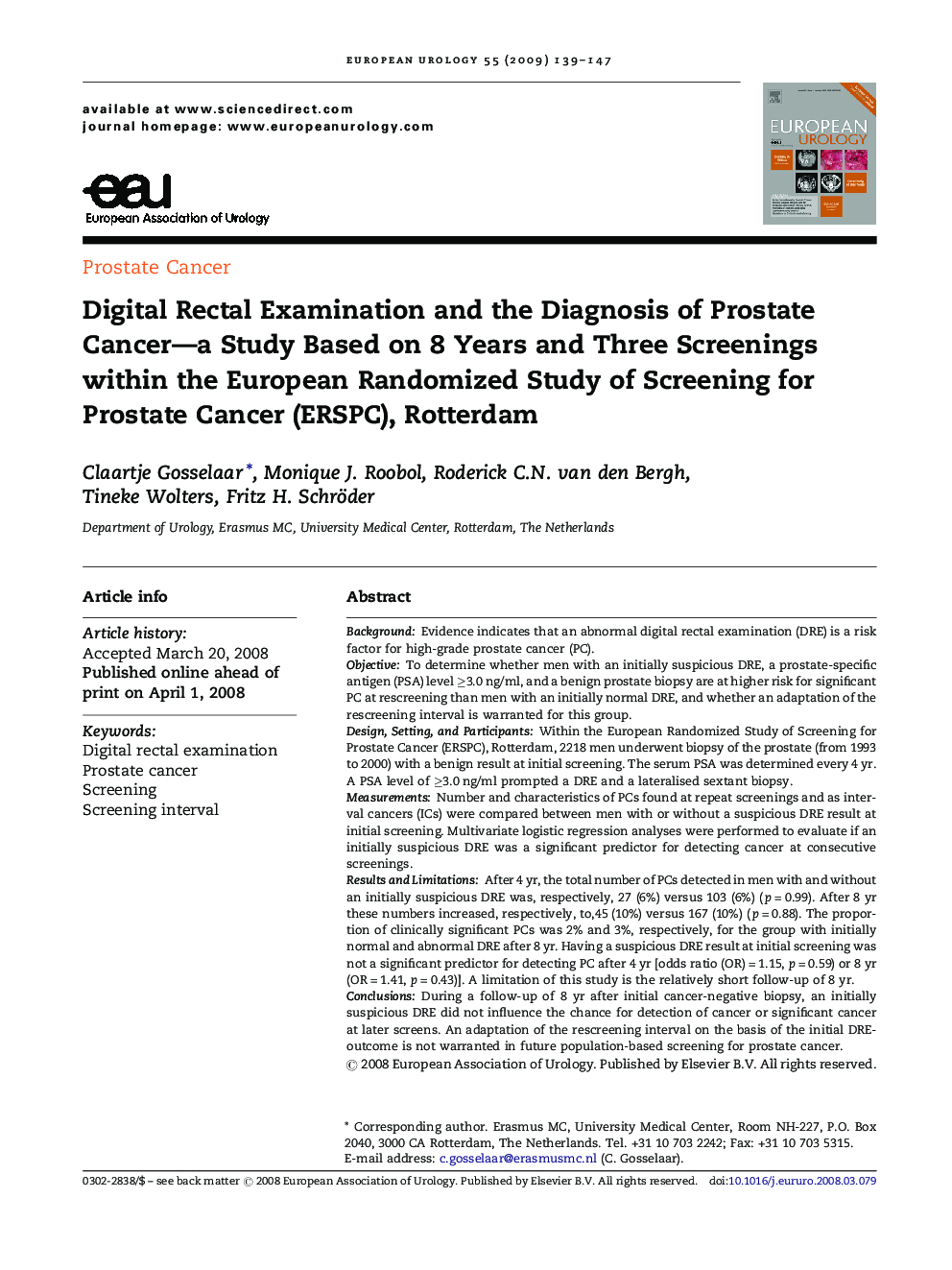| کد مقاله | کد نشریه | سال انتشار | مقاله انگلیسی | نسخه تمام متن |
|---|---|---|---|---|
| 3923120 | 1253016 | 2009 | 9 صفحه PDF | دانلود رایگان |

BackgroundEvidence indicates that an abnormal digital rectal examination (DRE) is a risk factor for high-grade prostate cancer (PC).ObjectiveTo determine whether men with an initially suspicious DRE, a prostate-specific antigen (PSA) level ≥3.0 ng/ml, and a benign prostate biopsy are at higher risk for significant PC at rescreening than men with an initially normal DRE, and whether an adaptation of the rescreening interval is warranted for this group.Design, Setting, and ParticipantsWithin the European Randomized Study of Screening for Prostate Cancer (ERSPC), Rotterdam, 2218 men underwent biopsy of the prostate (from 1993 to 2000) with a benign result at initial screening. The serum PSA was determined every 4 yr. A PSA level of ≥3.0 ng/ml prompted a DRE and a lateralised sextant biopsy.MeasurementsNumber and characteristics of PCs found at repeat screenings and as interval cancers (ICs) were compared between men with or without a suspicious DRE result at initial screening. Multivariate logistic regression analyses were performed to evaluate if an initially suspicious DRE was a significant predictor for detecting cancer at consecutive screenings.Results and LimitationsAfter 4 yr, the total number of PCs detected in men with and without an initially suspicious DRE was, respectively, 27 (6%) versus 103 (6%) (p = 0.99). After 8 yr these numbers increased, respectively, to,45 (10%) versus 167 (10%) (p = 0.88). The proportion of clinically significant PCs was 2% and 3%, respectively, for the group with initially normal and abnormal DRE after 8 yr. Having a suspicious DRE result at initial screening was not a significant predictor for detecting PC after 4 yr [odds ratio (OR) = 1.15, p = 0.59) or 8 yr (OR = 1.41, p = 0.43)]. A limitation of this study is the relatively short follow-up of 8 yr.ConclusionsDuring a follow-up of 8 yr after initial cancer-negative biopsy, an initially suspicious DRE did not influence the chance for detection of cancer or significant cancer at later screens. An adaptation of the rescreening interval on the basis of the initial DRE-outcome is not warranted in future population-based screening for prostate cancer.
Journal: European Urology - Volume 55, Issue 1, January 2009, Pages 139–147